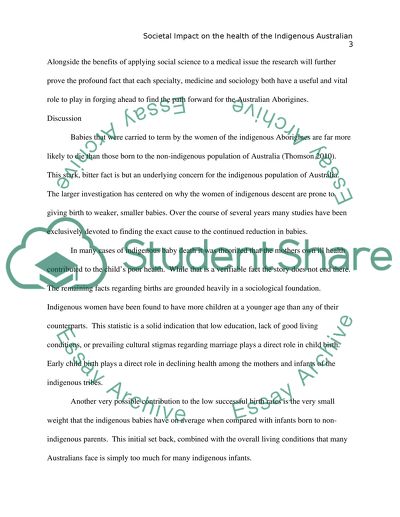Cite this document
(“Societal impact on the health of the Indigenous Australian Essay”, n.d.)
Retrieved from https://studentshare.org/sociology/1395427-societal-impact-on-the-health-of-the-indigenous-australian
Retrieved from https://studentshare.org/sociology/1395427-societal-impact-on-the-health-of-the-indigenous-australian
(Societal Impact on the Health of the Indigenous Australian Essay)
https://studentshare.org/sociology/1395427-societal-impact-on-the-health-of-the-indigenous-australian.
https://studentshare.org/sociology/1395427-societal-impact-on-the-health-of-the-indigenous-australian.
“Societal Impact on the Health of the Indigenous Australian Essay”, n.d. https://studentshare.org/sociology/1395427-societal-impact-on-the-health-of-the-indigenous-australian.


